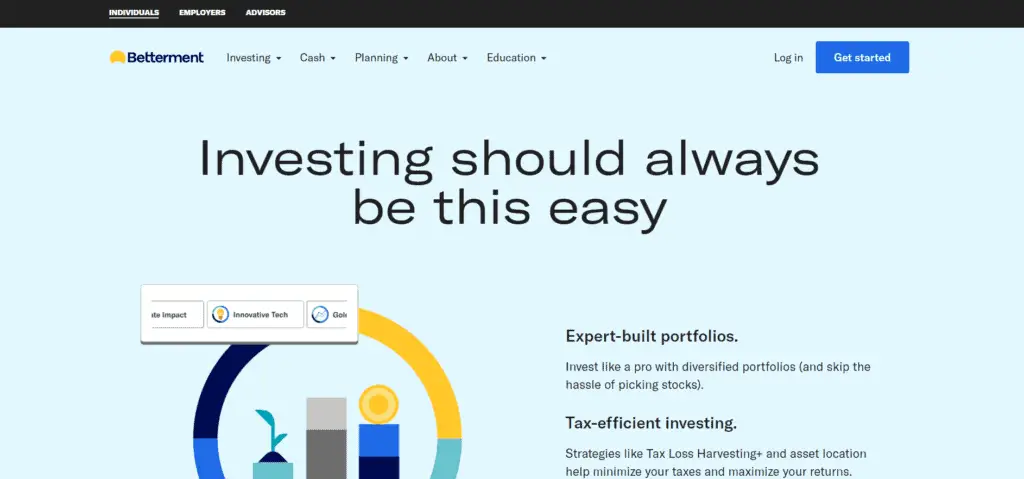In an era marked by economic disparities, micro investing can be a valuable strategy for long-term financial stability. According to Charles Schwab, only 50% of black women are currently invested, and this post is all about answering the question, is micro investing worth it?

While it’s time for millennial and Gen X black women to beat the odds and invest towards a better future, is this journey worth it?
As a black woman, I understand the challenges women experience in making investment decisions – the misconception of starting big, choosing between solid or digital assets, or starting a profitable business.
Getting financially educated is all that matters and this post is all about enabling you to actionably answer…is micro investing worth it for you.
Uncovering Must-Have answers to the “is micro investing worth it” question
Table of Contents
What is Micro Investing
Just like the popular proverb – Little drops of water can make a mighty ocean, Micro investment is simply the act of setting aside little sums of money and investing them consistently over a period of time. These investments are usually spread across a plethora of exchange-traded funds (ETFs), fractional shares, and other investment options.
Unlike in regular forms of investing where investors have to accumulate lump sums of money to acquire one or more shares, micro investment gives you the opportunity to buy fractions of shares, thereby increasing your investment options.

Is Micro Investing Good for Beginners?
One challenge for new beginners when investing is the risk of losing money and the connotation that actual investment requires significant capital. It doesn’t help that this school of thought is further reinforced by sayings like “it takes money to make money”.
For new investors or novices, micro investment helps them in their journey to financial freedom by enabling them to invest in diversified amounts of investment funds traded on the stock exchange. These ETFs provide beginners with flexibility, low costs, transparency, and even liquidity.
What are Micro-investment platforms and how do they work?
Micro investment platforms are services that help you with tools to invest small amounts of money. Since the stock market does not allow fractional investing, these services purchase a reasonable share of investments and further divide them into fractions, allowing their users to invest through these fractions.
For instance, rather than accumulate $10,000 or its equivalent before investing in shares of popular companies listed on the S&P 500 like Alphabet (Google’s parent company), Microsoft, Apple, etc. You could use an investment platform like Robinhood, Acorn, Stash, and others to purchase fractions of these shares at a much lower price.
Micro investment platforms work in a variety of ways, some of which include;
- Savings and Investing – Some micro-investment apps let you deposit small amounts of money intermittently from your savings bank into your investment account. These deposits could be daily, weekly, or monthly depending on your choice. These investments are then invested in a number of exchange-traded funds and other investments. Also, you could increase the amount you invest or the frequency of investments.
- Spending and Investing – Another common approach to micro-investment that some platforms might offer is the opportunity to round your purchases to a specified amount and divert the change into your investment account. This is important for people who make frequent purchases daily. For example, if you order lunch of $22.15 daily from your favorite restaurant, your debit card is charged $30 upon purchase and the extra 85 cents is sent to your investment account. This value seems small but it could easily accumulate to a $5.95 investment in a week and a $25.5 investment in a month.
Related Post: The First Black Billionaire Woman: The core 2 Facets of Sheila Johnson
Advantages and Disadvantages of Micro Investing

Micro investing has transformed the pathway of financial freedom, making it easier than ever for you to start investing even with seemingly small amounts of money. By democratizing wealth building, micro investing empowers you with different ways to take advantage of your financial future. Some prominent benefits or advantages of micro-investing include;
- Developing consistent saving and investment habits. One benefit of micro-investment is that it eliminates the excuse of requiring an initial lump sum before saving or investing or even the need for a constant income stream. By setting aside a couple of dollars or cents periodically, users easily develop a lifelong crucial habit of investment and savings.
- Reduction in the average amount of spend per share. When you practice dollar-cost averaging, which is simply the act of investing a fixed dollar amount regardless of a share price on a regular basis, you end up spending less per share. This helps you purchase more shares when the price is low and fewer shares when the share price is high.
- Automation and Ease of Investing. Rather than pass through brokerage accounts and tedious complicated processes before investing, you are able to invest at the click of a button. Some micro-investment apps even offer automation features that do not require you to take any action yourself.
- No barrier to investing. Micro-investment circumvents barriers to traditional investing by eliminating brokerage account minimums and high transaction fees. You are able to invest pennies, and cents and own little fractions of company shares.
- Reduced investment anxiety. Due to market forces, share prices can rise and fall, and many times, stock can head downwards or even temporarily crash. By developing a fixed micro-investment schedule regardless of market conditions, you are able to cushion the effects of anxiety during these periods.
- Diversified portfolio and low investment risk. Because micro-investments are usually spread across ETFs, fractional shares, and other investment options. Your portfolio becomes broad thereby reducing your risk of investment losses. This is in fact a wise investment decision.
- Long-term wealth creation. While the amounts invested could be small, perhaps even negligible. The power of compounding interests favors regular long-term investors. As time goes on, you begin to realize that your modest investments across different options can accumulate and grow substantially into significant compounded returns. Further reinvesting of these dividends and capital gains will accelerate your financial growth and help you build wealth. To achieve real wealth, your money has to work even while you sleep.
Subscribe to the BWG newsletter! Join the community and stay empowered.[sibwp_form id=1]
While micro-investing offers a plethora of advantages, it also has its limitations. Some of these include:
- Limited investment reach. Due to their focus on ETFs, fractional shares, and other low-penetrating investment options, micro-investment options are limited in reach when compared with traditional investments. This is because it provides a diversified investment portfolio. On the other hand, it might not meet your specific investment goals. If you seek a more specialized portfolio, then you might have to explore other investments.
- Low return on investments. Typically, micro investing platforms are targeted towards those who do not have the financial capacity to invest in a more traditional way. And if you have a higher income, or experience in investing, then you might be unsatisfied with the returns. Like Dave Ramsy said, “micro investing produces micro results,” so if you are looking to generate significant investment results, then the strategy might not be the best for you.
- Fees and Expenses. Like other platforms, micro-investment platforms may charge you fees for investing. These fees may be subject to increment if your portfolio exceeds a certain value. They may also be a considerable amount when calculated as a percentage of small investments. It is crucial that you monitor these fees to ensure that they do not eat into your returns.
- Lack of personalized or customized options. Another limitation of investing is that they are usually not personalized to suit your needs and more often they provide shallow comprehensive investment packages. This is particularly prominent if the app uses robo-advisors (AI tools that use specified algorithms and pre-programmed instructions to manage your money). They may create a false illusion of initially asking you some questions, but these are only to decipher your risk level or the algorithm you fall under.
Is $1000 too little to invest?
To correctly decipher if $1000 is too little for investing, you first need to consider some factors. This is because investing is a long-term incremental game. And whichever decision you take, $1000 can be a meaningful start, especially if you have limited resources.
Some factors to consider before investing $1000 are;
- Do I have an outstanding debt?
If you have an outstanding debt, then you should first prioritize paying it off. This enables your investment to be risk-free, especially if it is in a high-interest rate environment.
- Do I have an emergency fund?
An emergency fund helps to cushion unexpected expenses like medical bills, job loss, and any impromptu expenses. Before considering investment, you should first set aside 3-6 months worth of living expenses in your emergency fund.

- What are your investment goals?
Before investing, you need to understand what your investment goals are. Are they short-term or long-term? Investing for a downpayment for a car is different from investing for a phone. Either way, knowing what your set goal is will help you decide what approach to take.
- What fees will I incur from investing $1000?
An investment platform will always charge a fee for investing, and it is important to understand the transaction fees as well as other terms and conditions of investing.
- The Bottom line.
You do not have to accumulate thousands of dollars before you begin investing. $1000 is certainly not too little to invest, and by making the right decisions, it can start off a financial success.
Is Investing small amounts worth it?
Investing generally is worth it, and even small amounts can compound to significant returns in the future. Investing in small amounts can help battle inflation, and provide short-term financial relief. However, it is important to note that if you wish to build a substantial investment portfolio, it is okay to start small but gradually increase your investments with time and knowledge. This is because micro investing cannot guarantee enough net returns to secure your future in the long run.
Micro Investment Websites to Explore
We’ve seen the power of micro investment and its potential to contribute to a better future. you should now have a start to answering for yourself, “is micro investing with it?”
If you’re a Black woman looking forward to starting your micro investment journey, here are some platforms you should consider:
Micro Investment Apps:
Acorns
This is one of the best investment platforms where you can start with as low as $5.

Micro Investment Apps:
Betterment
It’s another great platform where you don’t have to maintain a minimum investment balance. However, an ACH minimum deposit of $10 is required.

Micro Investment Apps:
Robinhood
This platform is special because you get access to a free account and can start investing with any amount no matter how little.

This post was about learning and uncovering knowledge gems so that we can truly answer the question, “is micro investing worth it?”
Read Next: When Did Oprah First Become a Billionaire and 4 lessons we can run with

